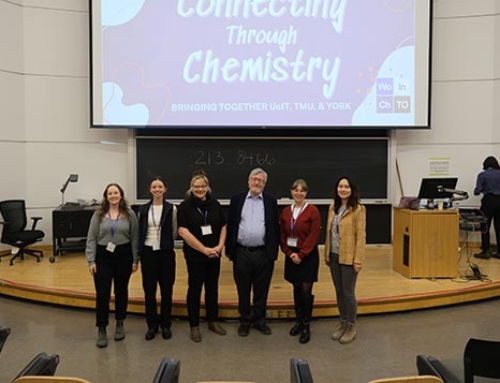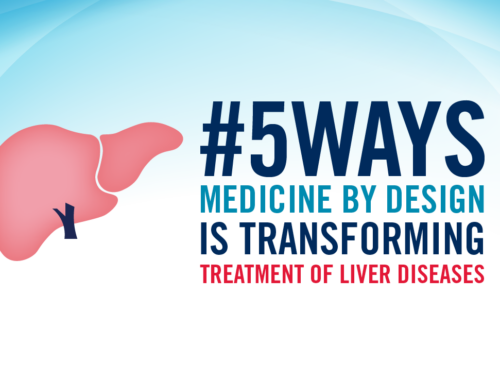
Maria Abou Chakra, research associate at the Bader Lab at the Donnelly Centre for Cellular and Biomolecular Research.
In a recent publication out of the lab of computational biologist Gary Bader, researchers used a combination of mathematical modeling with single cell transcriptomics data — which show the gene expression in an individual cell — to uncover an important gap in their knowledge.
“We found that two fundamental mechanisms involved in the cell, cell cycle duration and gene length, play more important roles in the range of different cell types than previously thought,” says Maria Abou Chakra, research associate in the Bader Lab and co-author on the study published recently in the journal eLife. “The importance of these findings is they may help us to better control the cells that are used in regenerative medicine applications.”

Figure showing output from the mathematical framework that can test different mechanisms and rules associated in cell decision and development. Individual cells are tracked and analysed across 3D space and time.
Regenerative medicine uses stem cells to replace diseased tissues and organs, creating therapies in which cells are the biological product. Regenerative medicine can also mean triggering stem cells that are already present in the human body to repair damaged tissues or to modulate immune responses. Increasingly, regenerative medicine researchers are using a stem cell lens to identify critical interactions or defects that prepare the ground for disease, paving the way for new approaches to preventing disease before it starts.
Bader says this work, which was entirely funded by Medicine by Design, will have a direct impact on regenerative medicine researchers since the mathematical modelling framework they developed can be used to explore a variety of cell decision and tissue control mechanisms in 3D space and time. The model can partner with experimental tools that are currently used by regenerative medicine researchers to answer specific questions.
“We hope that this work, and the novel and extensible stem cell mathematical modeling framework we developed, will help us better understand how developing regenerative cellular systems operate and can be controlled,” says Bader, who is also professor of molecular genetics. His lab is located at the Donnelly Centre for Cellular and Biomolecular Research.
The Bader lab collaborates on several Medicine by Design-funded team projects.

Gary Bader, professor at the Department of Molecular Genetics, University of Toronto.
“We work on the blood, liver and brain and muscle self-repair projects and these projects have strongly influenced this new published research. We hope that our mathematical modeling approach will eventually help to better understand blood aging, generate purer liver cell populations from stem cells to support cell therapy, and understand how to activate and control tissue repair processes,” says Bader.
Bader adds that this published work would not have happened without the support of Medicine by Design, which brings together more than 150 leading researchers at the University of Toronto.
“Early discussions in the Medicine by Design community identified a gap in mathematical modeling of stem cells and developing tissues in Toronto. Attracting Dr. Abou Chakra to Toronto from Europe to work on this project directly responded to this community need and led to this exciting work.”
About Medicine by Design
Funded by a $114-million grant from the Canada First Research Excellence Fund, Medicine by Design brings together more than 150 principal investigators at the University of Toronto and its affiliated hospitals to advance regenerative medicine discoveries and accelerate them toward impact. It builds on decades of made-in-Canada excellence in regenerative medicine dating back to the discovery of stem cells in the early 1960s by Toronto researchers James Till and Dr. Ernest McCulloch.





